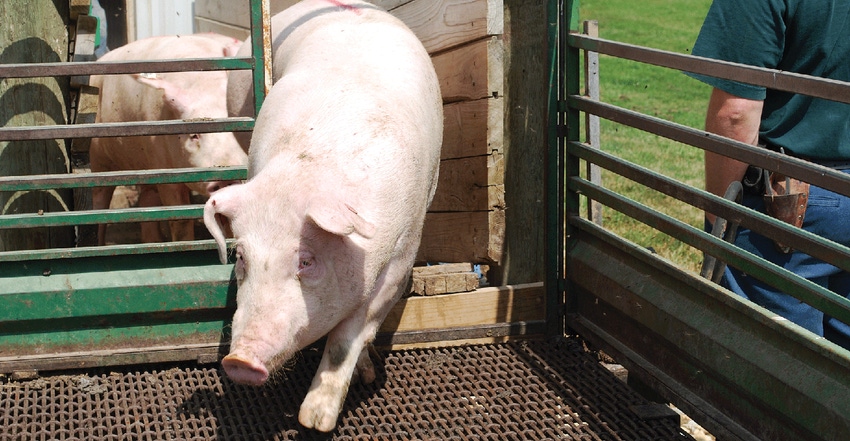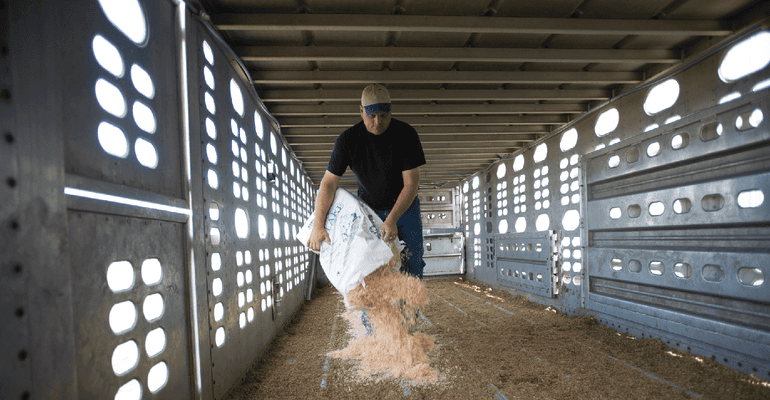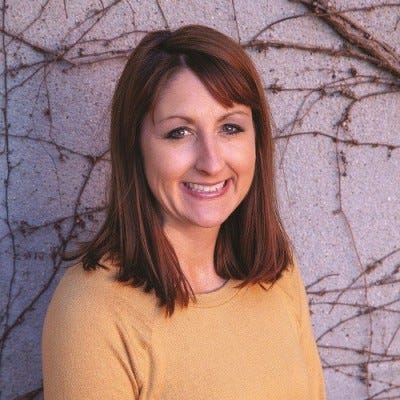Sharing your Secure Pork Supply Plan
If foreign animal disease breaks in the United States, state veterinarians will be first in command.

You’ve heard the name before. You’ve seen him or her speak at an industry event. You’ve seen the warnings the office has issued regarding anthrax or bovine tuberculosis outbreaks in the state. But the question remains: How well do you, as a pork producer, know your state veterinarian?
If African swine fever should hit the United States, that’s one person you should know, says Dave Pyburn, DVM, senior vice president of science and technology for the National Pork Board.
“It’s not just African swine fever. It’s with any of the foreign animal diseases. The state veterinarians are going to play a key role,” Pyburn says. “They are going to be the folks on the ground in whatever state or states that this is occurring in at time zero.”
While the USDA will organize and have an instant response that will be done co-command with the state veterinarians, Pyburn says the USDA won’t be there at time zero. It will be days later before the USDA can get into that state. The former senior veterinary medical officer at the USDA’s Animal and Plant Health Inspection Service Veterinary Services is quite familiar with the process, as he was on the scene when virulent Newcastle disease struck commercial poultry flocks in Southern California in the early 2000s.
“Right from the get-go, the state vet — he or she — has a job of first making sure whatever the foreign animal disease is, that it doesn’t spread further,” Pyburn says. “He or she is going to quarantine areas where they know the disease or think the disease is to be; and at the same time they are going to start looking at surveillance, looking at how far in my state, and how much farther this disease could potentially extend.”
Reaching out regionally
According to Roy Lee Lindsey, executive director, Oklahoma Pork Council, his state ships out 6 million-plus weaned and feeder pigs every year. That’s why he’s encouraging Oklahoma pork producers to not only get to know their state veterinarian, but also the ones from neighboring states.
“We recognized very quickly the pork industry in Oklahoma, especially in the Panhandle of Oklahoma, is not just Oklahoma. It’s southwest Kansas, it’s the Texas Panhandle, it is the Oklahoma Panhandle; and disease, if you will, does not recognize the boundary on a state map,” Lindsey says.
“The concept is, Oklahoma state veterinarian is going to be able to do whatever needs to be done; it becomes apparent pretty quickly that is really not the case, and we need to be thinking about this more in a regional approach rather than a state approach.”
In November, the Oklahoma Pork Council along with veterinarians from all the major pork-producing companies in the region, the state veterinarians from Oklahoma, Colorado, Kansas and Texas and their staffs, and USDA veterinarians and emergency planners came together to start talking about what would need to be done if the U.S. were to experience an FAD outbreak. The discussion included the epidemiology of ASF and how it has spread through commercial facilities in places such as China and Russia, what would need to be done to get out of a stop movement order, and what kind of diagnostics would need to be collected from the farm.
Lindsey says it was also a prime time to educate the state veterinarians on the logistics involved in today’s commercial swine business that would be affected during an outbreak.
“Veterinarians have tremendous expertise in taking care of animals. What is rare is that state veterinarian that generally understands what we do on-farm today and in modern commercial production — how we move animals and why we move them, and what else moves in and off the farm from supplies, medicine, feed, repairs, the maintenance people that come and go,” Lindsey says.
“I think we, as an industry, get caught up in what we do every day. We understand it, we know what those pieces are, so we don’t think about it much. And then lo and behold, we have a disease challenge somewhere down the road, and we go to the state veterinarian and say, ‘We’ve got to move feed in here’; and he doesn’t understand we only have feed for three or four days, and we’ve got to deliver feed again.”
For example, Lindsey says in his region alone, the Seaboard processing plant in Guymon, Okla., sees almost 120 trucks every day delivering market hogs. Feed trucks are going out every single day, and sow farms are weaning once a week.
“How long can you hold pigs on a farm before we have animal care issues on that farm?” Lindsey asks. “Sow farms are designed for us to move pigs every week, and in some places twice a week; so, if you suddenly have a stop movement order and you can’t take pigs off that farm, what does that outcome look like? How long can you manage that?”

Stop movement can’t last
The south-central U.S. is not the only region getting a jump on FAD discussions with its state veterinarians. In December, Pipestone Veterinary Services invited the state veterinarians from South Dakota, Iowa, Nebraska and Minnesota as well as other integrators from the region to discuss how to handle an outbreak in an industry that is on the road every day.
“As we talked through that, we recognized that stop movement cannot last long,” says Dustin Oedekoven, state veterinarian with the South Dakota Animal Industry Board. “Eventually for the sake of the welfare of the pigs and the continuity of the swine business, we have got to re-establish that movement.”
That’s why Pyburn says it is crucial producers get their Premises Identification Number through their state veterinarian for each of their sites where pigs reside.
“The state veterinarians will pull those PINs for areas of concern within their state and say, ‘Here’s where we need to send folks, here’s where we have pigs at, here’s where we need to investigate and see if we have disease there, too,’” Pyburn says.
Once the state veterinarian can establish where the disease is, get surveillance up and find out where it has moved to, he or she then can examine the individual farms based on PINs and see if they are safe to move pigs.
“That is going to be the state veterinarian’s decision in each and every state as to if they are going to permit those movements either out of their state, coming into their state or across their state,” Pyburn says.
Practice with poultry
Oedekoven is no stranger to the permit system. In 2015 during the H5N2 avian influenza outbreak in commercial turkey flocks in South Dakota, the permit system was imposed.
“It seemed to work well,” Oedekoven says. “I hope we don’t get African swine fever here, but those are the plans we hope to follow if needed.”
The National Pork Board also took some cues from the Iowa poultry sector. During that state’s outbreak with influenza, the information the state veterinarian needed to make decisions regarding bird and egg movement, such as diagnostics and biosecurity data, was not available electronically.
Pyburn says it was a paper nightmare — and one of the reasons the organization has been asking state veterinarians what information they need and need quickly.
“We want to give them whatever data they feel like they need to make that educated decision, to allow safe movements again,” Pyburn says.
After getting a PIN, Pyburn says producers need to validate that it is actually pointing to the location where they have pigs.
“We got to make sure they are validated PINs, so when state veterinarians turn to them they are correct, and they can start to try to either contain disease or go out and do surveillance for disease,” Pyburn says.
Secure Pork Supply
The Secure Pork Supply Continuity of Business Plan is an opportunity for producers to voluntarily prepare before an outbreak. The SPS better positions pork premises with animals that have no evidence of infection to move animals to processing or another pork production premises under a movement permit issued by regulatory officials, and maintain business continuity for the swine industry, including producers, haulers and packers during an FAD outbreak.
This past fall NPB met with 15 state veterinarians in some of the largest pork-producing states and walked them through SPS and what diagnostic, animal movement and on-farm biosecurity data would be available through the program for them to make decisions.
“I think right now their biggest question for us is, ‘What is the Secure Pork Supply system and how can I tap into and use that data?’” Pyburn says.
The next question, Oedekoven says, is how do state veterinarians get producers and veterinarians on board with writing and implementing such a plan? Thus far his staff has fielded questions from some herd veterinarians who are writing these plans on the specifics required, the practicality of these plans and concerns about how well plans will be implemented.
“They are going to need to develop this plan with their veterinarian — have their plans not only written, but understood by farm staff,” Oedekoven says.
“If we get African swine fever virus, how can we implement those plans, so that at the state level, when we get a call or permit to move pigs in the face of an outbreak, those plans are not new to anyone on the farm, and they are known and they are understood, and that we as state animal health officials can place confidence in that information, and allow the movement of those animals safely?”
Oedekoven says it’s one thing to have a plan, another to really understand and say, “This is how we are going to help implement the plan.
“I think we are going to see some differences between the integrated swine companies who probably have more resources and the ability to develop those plans for their whole production system, and the independent producers who may not have the same resources or the ability, and are doing a number of other things to maintain their livelihood in the industry; and development of that plan may not be at the top of their to-do list today,” Oedekoven says.
State veterinarian as partner
Lindsey believes most of the swine production companies in his region have a disease plan, but that doesn’t mean it is being shared with the state veterinarian.
Oedekoven says the state of South Dakota has recently started collecting voluntary Secure Pork Supply enrollment forms, which do not include a farm’s specific FAD outbreak biosecurity plan but indicate that a farm has a plan and intends to participate in the SPS if it is part of an FAD response.
“If you have a good relationship with your state veterinarian and outlined your plans to him or her, then it becomes very likely, or certainly very possible, that you can stick with your plan, rather than the state veterinarian coming up with one on their own,” Lindsey says.
According to Lindsey, disease response conversations with the Oklahoma state veterinarian have been ongoing, ever since the foot-and-mouth disease break in England 15 to 16 years ago, but the industry has evolved since then. For example, the Oklahoma Pork Council’s goal now is to be the best state to raise baby pigs, in contrast to the overall production of market hogs.
“We are extremely dependent on business continuity on a plan that allows us to continue to move animals,” Lindsey says. “If you don’t have that relationship up front, you are going to have to build that as you go, and building relationships during a time of crisis is a real challenge.”
No dialogue yet — start one
For producers or state associations in states where there haven’t been FAD response discussions with state veterinarians yet, Pyburn says they should take it upon themselves to get them started.
“Talk to your state veterinarian; ask them if they have a plan with whatever state you need to ship or receive pigs from,” Pyburn says. “Make sure both discussions have happened ahead of time, so once we would have an outbreak, Secure Pork Supply could be activated — and then very quickly, state veterinarians can make decisions on where to allow movement of pigs based on what they are seeing in the Secure Pork Supply system.”
He encourages producers to ask what the plan is if we get an FAD — and it should not just be limited to ASF.
“What’s the plan as far as animal movement stops, truck movement stops; what is the plan to restart these?” Pyburn says. “What kind of information will you be asking from me, from the producer, to restart those movements? What is the plan for disposal?”
The USDA has declared disposal is a state-by-state issue. Some allow burying, while others allow burning. Producers will need to know what that state plan is for disposal if farm depopulation needs to occur during an outbreak. Pyburn says producers also need to make sure the state veterinarians understand the number of animals that could be affected in a depopulation.
“Ask your state veterinarian to sit down and talk with other state veterinarians, especially if they are in a state you need to cross into, or bring pigs into or out of. Make sure those discussions are started, so the folks have a relationship built up,” Pyburn says. “In the face of an outbreak, then they can have further discussions on how to restart those movements we need to have happen, only when they are safe.”
If you don’t have a good relationship with your state veterinarian, Lindsey says you are essentially setting yourself up for failure.
“In my mind I can’t put a high enough value on the importance of building that relationship with your state veterinarian,” Lindsey says. “Ultimately, each of these state veterinarians are vested with tremendous authority in their own state, and they have got to answer to the people in their state — but they also recognize, as a group of professionals, disease doesn’t necessarily recognize state lines.”
About the Author(s)
You May Also Like





